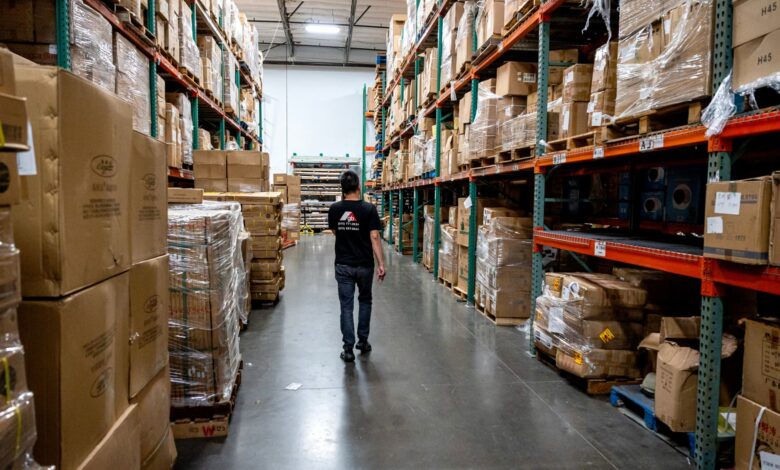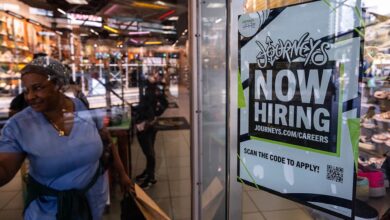Wholesale prices rose 0.2% in August, in line with expectations

Wholesale prices rose in August about in line with expectations, the final inflation data point as the Federal Reserve gets set to lower interest rates.
The producer price index, a measure of final demand goods and services costs that producers receive, increased 0.2% on the month, the Bureau of Labor Statistics said Thursday. That matched the Dow Jones consensus estimate.
Excluding food and energy, PPI increased 0.3%, slightly hotter than the 0.2% consensus estimate. The core increase was the same when excluding trade services.
On a 12-month basis, headline PPI rose 1.7%. Excluding food, energy and trade, the annual rate was 3.3%.
In other economic news Thursday, the Labor Department said initial filings for unemployment benefits totaled 230,000 for the week ended Sept. 7, up 2,000 from the previous period and higher than the 225,000 estimate.
Stock market futures were little changed after the report while Treasury yields were mostly lower.
On the PPI measure, services prices pushed much of the gain, with a 0.4% monthly increase driven by a rise in services less trade, transportation and warehousing. Another big contributor was a 4.8% jump in guestroom rental.
Goods prices were flat on the month, reversing a 0.6% gain in July.
The release comes a day after the BLS reported that consumer prices rose 0.2% on the month in line with expectations. However, that report also showed that core prices climbed 0.3%, slightly more than expected and pushed higher mostly by an increase in shelter-related expenses.
On an annual basis, headline CPI inflation decreased to 2.5% while core held at 3.2%.
Neither report is expected to keep the Fed from lowering benchmark interest rates by a quarter percentage point when its two-day policy meeting concludes Wednesday. The central bank’s key overnight borrowing rate is currently targeted in a range between 5.25%-5.5%.
“With PPI basically repeating yesterday’s CPI reading and jobless claims in line with expectations, the decks have been cleared for the Fed to kick off a rate-cutting cycle,” said Chris Larkin, managing director of trading and investing for E-Trade from Morgan Stanley. “The markets are anticipating an initial 0.25% cut, but the discussion will soon turn to how far and fast the Fed is likely to trim rates over time.”
Market pricing had indicated some uncertainty over how much the central bank would cut, but recent data along with statements from policymakers have pushed Wall Street into looking in a more traditional quarter-point move, rather than a more aggressive half-point reduction. Beyond that, traders are expecting the Fed to lop a full percentage point off by the end of 2024, according to the CME Group’s FedWatch gauge.
Fed officials of late have turned their attention more to a slowing labor market.
The jobless claims report indicated that layoffs have not spiked, though the weekly number has risen slightly over the past several months.
Continuing claims, which run a week behind edged just higher to 1.85 million, an increase of just 5,000 from the previous period.




